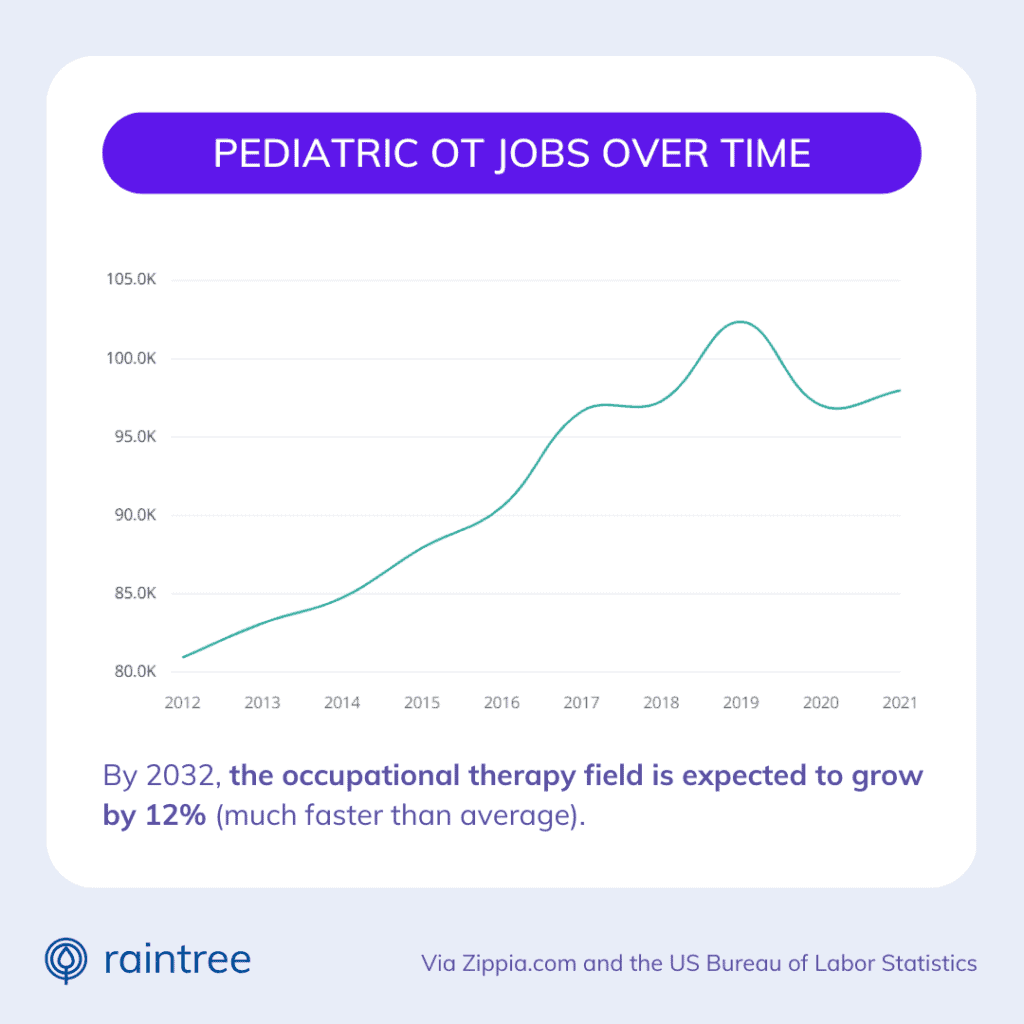Staffing, recruitment, and retention are some of the biggest challenges for outpatient pediatric clinics.
That’s why I invited Nancy Mura—president of Survival Strategies, Inc. and one of the founders of Peds-a-Palooza, an online community for pediatric private practice owners—to a recent episode of the Therapy Matters podcast.
After discussing today’s most pressing pediatric therapy staffing issues (and how to overcome them), I’m here to share some key takeaways from our conversation.
1. Supply and Demand in the Pediatric Therapy Job Market
Decades ago, pediatric clinics had what Mura calls “major marketing problems.” Many parents didn’t realize the extent to which children needed help with developmental problems. They simply thought that schools were equipped to help their kids. From a business standpoint, this meant that pediatric therapy was a “no man’s land.” Competition was low, but so was demand.
Mura says that, today, the market has completely changed. The value of habilitative and rehabilitative services across all age groups is more widely understood. Demand for services is so high, in fact, that practices have proliferated like gas stations—there’s practically one on every corner. This represents a positive shift for the profession, but Mura points out that it brings its own issues, too: “What does that [expansion of locations] mean? That means they all need to be staffed.”
Now, there are far more practices hiring for pediatric physical, speech, and occupational therapists than there are practitioners to fill those roles. Mura says that imbalance has created an employee-driven market. On top of reimbursement challenges, today’s market can put practice leaders and owners in a tough spot. In our talk, Mura offers an empowering perspective:
“Anything that you can conceive of can be done. I’ve got a ton of people talking about diminishing reimbursements. Hiring and diminishing reimbursements—there’s ways around that. If you’re willing to be the windshield and not the bug, there is a solution to every problem that you have in private practice.”
2. Top Issues in Recruitment and Retention
Because pediatric therapy staffing has become so competitive, it’s crucial to know which personal and professional factors are most important to the workforce.
For example, Mura points out that today’s therapists exit higher education programs with significant student loan debt. This burden creates a higher expectation when it comes to salary negotiation. Mura points to debt ratios as a significant shift in recruiting and retaining new graduates over the past decade. “Therapists started coming out of school with a different idea of how much they needed to make,” she says.
Other important factors in job satisfaction include work-life balance and professional growth and education opportunities. To reduce burnout among staff and help your team function better, you should also address inefficiencies in administrative tasks and documentation.
There are many strategies you might take to address the needs of your candidates. Mura highlights one program developed by a colleague, which presents a career “ladder” within the practice. “[New hires] knew they started here and, in five years, they could be here, [and] this is how much money you can make.”
3. When Pediatric Therapy Staffing Challenges Lead to the "Wrong Fit"
Have you ever interviewed a candidate who you knew wasn’t the right fit, but you ended up hiring them because you desperately needed the staff?
“You cannot hire under fire,” Mura says. “That’s where a lot of people go wrong.”
Don’t wait until your staff are burnt out and juggling impossible caseloads. Don’t wait until your top players are on maternity leave or planning to move across the country. Don’t wait until you’ve missed an opportunity to expand your business.
The solution, Mura says, is to take a proactive approach: “You have to constantly be looking for and collecting resumes. If you get a person who is amazing, hire them.”
Get the Newsletter!
Key rehab therapy insights and resources. Twice a month. Unsubscribe any time.
How to Create the Right Environment for Your A-Team
“Here’s the dirty truth that I [want you] to know,” Mura says. “[Clinicians] are going to go to work where they want to work. Why not 123 PT or 123 Pediatric? Why not this facility? Why? Because they can choose.”
If a highly-qualified candidate comes in for an interview, they should feel like there’s no better place where they could go to work.
“I hate to be cliche, but teamwork does make the dream work,” says Mura. “But that owner had better know what the dream is.”
A few ways to create the right environment for your dream team:
- Seek out purpose-driven individuals. Many candidates are looking for a role where they can punch the clock and collect a paycheck. But always keep an eye out for those “A-plus” players: candidates who don’t want the responsibility of ownership, but who “want to go somewhere, and want to help you grow.” For you to get those people, Mura says, “you have to have a mapped-out plan.”
- Prioritize efficiency. If you want to attract top candidates who will help your practice evolve, you’ve got to help them thrive with streamlined workflows and processes. “Build it, and they will come. But that’s why you have to have that level of efficiency,” Mura advises.
- Don’t be afraid of new graduates. “There’s a plus side to new graduates,” Mura says. “You get to break them of any [bad] habit before they have it.”
I’ve seen what A-teams do for a practice. It takes a village. It’s not some owner waving a magic wand. It takes that team, that support, that compliance, that foresight, and that vision of others to make the dream come true.
Nancy Mura
Surviving Today's Hiring Challenges: Tips for Pediatric Therapy
Toward the end of our conversation, Mura shared some important advice for growing pediatric therapy clinics:
“I think this is a very difficult time. There’s been a lot of change… When the conglomerates come in and buy up everybody, it makes it very hard for mom and pops to survive. Now is the time to put your stake with a little white flag into the ground, call it yours, and stabilize. Get efficient, stabilize, and expand so that you make a name for yourself, so that when someone comes in and opens up ten locations in 18 months in your area, you can survive through that.”
In addition to staying informed about the field’s greatest challenges, practice owners should remember this: “Be willing to engage and keep an open mind, and you can always learn.”
Listen to the full conversation on Therapy Matters podcast episode 22: “Solving Staffing Issues in Therapy.”



